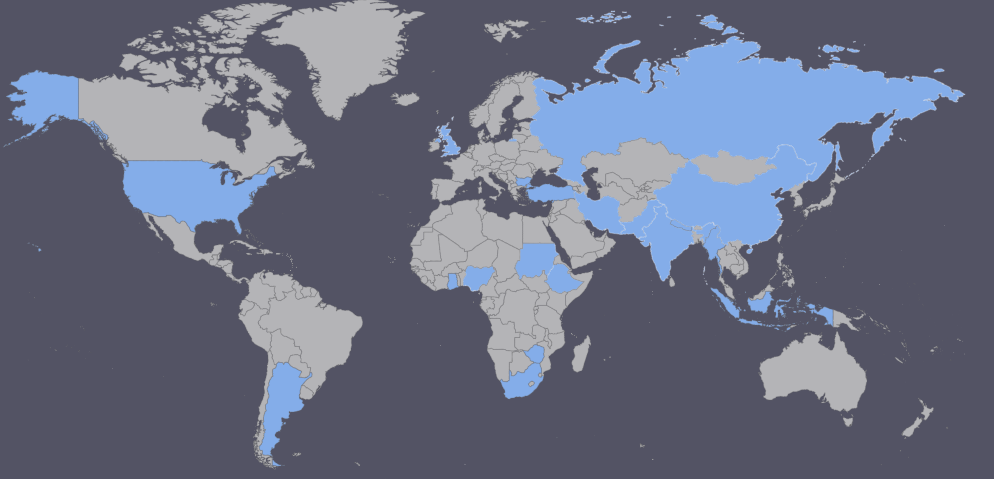Numerical Modeling of the Groundwater Flow in the Area Around Atbara Town, River Nile State, Sudan
Keywords:
Aquifer, Calibration, Groundwater potentiality, MODFLOW, Simulated headAbstract
This paper emphasized on the numerical modeling of ground water as it is vulnerable resources to many environmental risks and is essential to sustainable development. The main geological units in the study area are Pre-Cambrian Basement Complex, Upper Cretaceous sedimentary formation, Oligocene Hudi Chert and Quaternary superficial deposit. The threedimensional groundwater flow model was performed to evaluate the groundwater potentiality and assess the effect of groundwater withdrawal to the regional water level and flow direction in the Atbara basin of Sudan. The model was calibrated using 3D Finite difference visual MODFLOW. The model calibration criteria such as absolute residual mean, root mean square error and mass balance error of water into and out of the system were adjusted to suitable values. Hence, model calibration seemed to be more acceptable with average of 0.756 m and average absolute residual mean of 0.633 m and average normalized root mean square of 2.45%. The contour maps of the simulated heads produced by visual MODFLOW show fair similarity with the contour map drawn using initial heads which confirm the reliability of visual MODFLOW application and acceptable model calibration for the problem. Therefore, numerical simulation indicated that, a sharp drop of hydraulic head can be observed at the center of the model area, east of Atbara River, generated cone of depression and a continuous decline of head with respect to the time as a result of heavy groundwater abstraction. The southwest part of the area between Atbara River and River Nile represents relatively high permeability zone and the model confirmed it to be the most productive region in the area and can be used for storing additional groundwater. Observation wells elaborate the reasonable match between the observed and calculated heads through the entire simulation period.
References
Appelo, C.A.J., Postman, D., 2005. Geochemistry, Groundwater and Pollution, seconded. Balkema, Rotterdam. 649 p.
Baalousha, H., 2006. Vulnerability assessment for the Gaza Strip, Palestine using DRASTIC. Environ. Geology 50, 405-414.
Drever, J.I., 1997. The Geochemistry of natural waters: surface and groundwater environments. 3ed Edition, Printice Hall, Englewood Cliffs.
Eltayib, S.H.M.A., 2019. Hydrochemical Characteristic and Ground Water Quality of the Aquifers in area around Aldamer Town-River Nile Sate – Central Sudan. International Journal of Geology, Agriculture and Environmental Sciences 7 (1), 14-21.
Eltayib, S.H.M.A., Elkrail, A.B.M., 2018. Regional groundwater flow modeling of Aldamer Area, River Nile State-Sudan. International Journal of Applied Science and Mathematics 5, 47-55.
Elkrail, A., Hamid, A., Obied, B., 2012. Hydrochemistry of Groundwater at Omdurman area Khatoum State Sudan. International Journal of Civil and Structural Engineering 2 (4), 1420-1428.
Elkrail, A., Hassan, S., Gumaa, R., 2014. Hydrochemical Characteristics of Groundwater at Northeast Atbara Town, Nile River State, Sudan. International Journal of Innovation in Science and Mathematics 2 (1), 82-86.
Elkrail, A., Salah, M., 2013. Groundwater Chemistry of Sallum Area-Red Sea State, Sudan. Journal of Environ. Science, Computer Science and Engineering & Technology 2, 1301-10.
Frapporti, G., Vriend, S.P., VanGaans, P.F.M., 1993. Hydrochemistry of the shallow Dutch groundwater: Interpretation of the national groundwater quality monitoring network. Water Resource Research 29, 2993-3004.
Freeze, R.A., Cherry, J.A., 1979. Groundwater, Prentice-Hall. Hem, J.D., 1985. Study and interpretation of the chemical characteristics of natural water. US Geological Survey Water Supply Paper 2254, 263 pp.
Hem, J.D., 1992. Study and interpretation of the chemical characteristics of natural water. U.S. Gov. Print. Office,
Washington, DC.
Malcolm, R., Soulsby, C., 2001. Hydrogeochemistry of groundwater in coastal wetlands: implications for coastal conservation in Scotland. The Science of the Total Environment 265, 269-280.
Mukhtar, M., 1999. Evaluation of ground water in Atbara basin by resistivity methods. Sudan – Bulletin of Geological Survey Sudan, pp. 18-76.
Ophori, D.U., Toth, J., 1989. Patterns of ground –water chemistry, Ross Creek Basin. Alberta, Canada. Ground Water 27, 20-26.
Piper, A.M., 1944. A graphical procedure in the geochemical interpretation of water analysis. American Geophysical Union Transaction 25, 914-928.
Sener, E., Davraz, A., 2013. Assessment of groundwater vulnerability based on a modified DRASTIC model, GIS and an analytic hierarchy process (AHP) method: the case of Egirdir Lake basin (Isparta, Turkey). Hydrogeo. Journal 21, 701-714.
Sener, E., Sener, S., Davraz, A., 2009. Assessment of aquifer vulnerability based on GIS and DRASTIC methods: a case study of Senirkent-Uluborlu basin (Isparta, Turkey). Hydrogeology Journal 17, 2023-2035.
Vail, J.R., 1978. Outline of the geology and mineral deposits of the Democratic Republic of the Sudan. Overseas Geology and Mineral Resources, London, pp. 49-67.
Whiteman, A., 1971. The Geology of the Sudan Republic, Oxford, Clarendon press, London; pp. 290.
Downloads
Published
Issue
Section
License
Copyright (c) 2021 Sadam Hassan Eltayib

This work is licensed under a Creative Commons Attribution-NonCommercial-NoDerivatives 4.0 International License.
The authors keep the copyrights of the published materials with them, but the authors are aggee to give an exclusive license to the publisher that transfers all publishing and commercial exploitation rights to the publisher. The puslisher then shares the content published in this journal under CC BY-NC-ND license.



